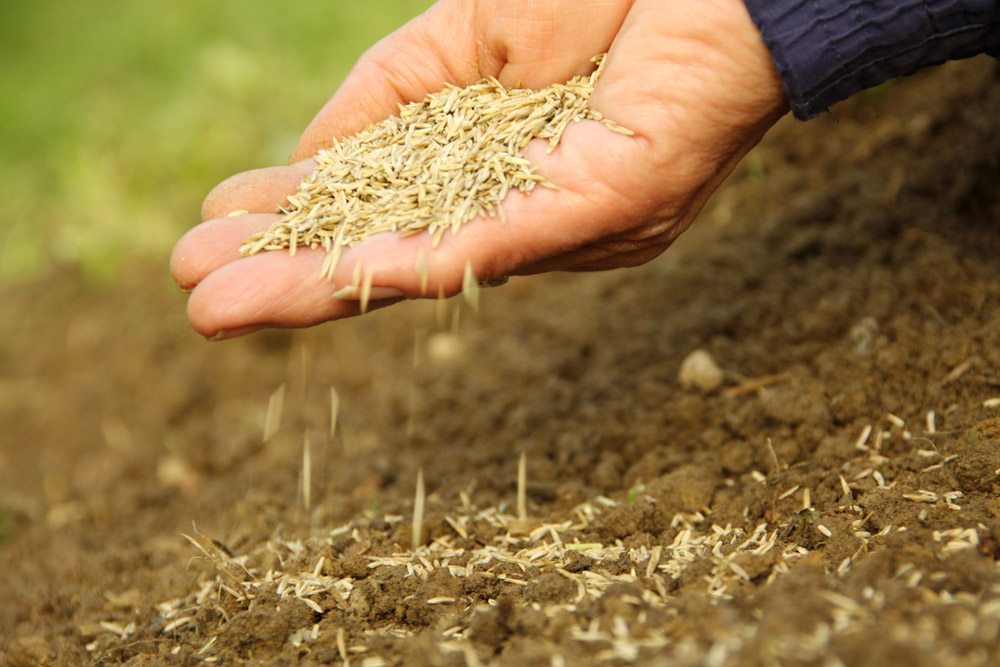A Sea of Green
In Utah, lawn care is as important as any other aspect of landscaping. Like the dust jacket of a book or the presentation of a dish in a restaurant, your grass fills the unique position of being an easy “shortcut” for judging not only the home that sits on your property (or the people who live in it) but the neighborhood as a whole.
When looking out your front windows to the yard surrounding your home, do you see an ocean of healthy green grass? Or are there bald spots, burnt patches, harrowed-up divots, and the hint of mold spreading across the yard?
If your lawn needs resuscitation, the team at Lawngevity can help. Ultimately, we want to reestablish the healthy, lush carpet of greenery around your yard but that might mean we need to attend to the other problems first. Let’s take a look at the process of reseeding your yard and the best grasses for Utah lawn care.
Fixing Problems
If your grass has any of the aforementioned issues, or you think it might, you’ll want to give us a call right away. Time is of the essence, especially with winter on the way. The secret to a successful reseeding operation is to prepare the ground for new growth. That means:
- Raking fallen leaves
- Testing your soil
- Treating unchecked foliage disease
- Getting rid of weeds
- Aerating the yard
- Mowing the lawn for an inch and a half-length, picking up any clippings
Whether you have weeds, lawn disease, or an infestation of bugs and pests, the solution is the same: our experts use a proprietary blend of chemicals to rid the lawn of whatever ails it. By working with our specialists, we can set you up with one or more of our lawn care programs that will leave the grass free of agents that would otherwise eat or suffocate the newly-laid grass seeds.
Picking the Right Grass
Utah’s climate means there are particular ways that stand out as the best ways to care for your lawn. One might not consider that some types of grass fare better than others in Utah, but it’s true.
While there are myriad species to choose from, the experts agree that when you’re reseeding your yard, you’ll want to consider the following grass seeds to buy. They can be separated into warm and cool-season grasses. This means that some seeds have active growth at certain times of the year will thus have an easier time germinating in a certain type of environment. This is helpful so that someone from Logan doesn’t invest in a type of grass that would best suit St. George or vise-versa.
Warm Season Grasses
Let’s start with the warm season — the late spring and summer months. Traditionally, these grasses will go dormant in the early- to mid-fall, so you will likely need to reseed again before winter comes. Warm-season grasses typically need as much sun as you can give them.
Tall Fescue
Not to be confused with Fine Fescue, which typically finds use in the cooler months, Tall Fescue is an incredibly tough species of grass. It can typically withstand extreme temperatures, heavy footfall, and even some diseases.
It gets its name from the fact that it does better when it is cut a little taller than other types of grass (better to get the sunlight). With so much access to the elements, the germination of Tall Fescue is relatively short, only about a month.
Buffalograss
While there are other types of grass that grow dark green/bluish in color (like the aptly named Bluegrass — more on that later), Buffalograss fares better in hot weather. Unlike the Tall Fescue, Buffalograss does not grow very long, which offers a more manicured appearance to your yard’s aesthetic.
Buffalograss also goes dormant in a more elegant way than other bluish lawns. It turns a rich golden color.
Cool Season Grasses
Despite the name, cool-season grasses are not meant to spring up in the dead of winter. While they are great for reseeding in the fall, their germination occurs in early- to mid-spring and lasts through mid-fall. They do well in shade but require more watering in the summer months in order to survive.
Kentucky Bluegrass
Not only a popular choice for Utah’s lawn care but a species seen throughout the United States, Kentucky Bluegrass is hearty, lush, and handles sunlight better than many other cool-season grasses.
This is also a popular grass to blend with other types in order to fill in bald spots.
Fine Fescue
As the name suggests, this grass has some of the finest blades of any type. It also performs the best with the longest amount of shade coverage. Because of its delicate nature, the grass is more ornamental than utilitarian and performs best as parking strips and front yards. You want to avoid growing it in places with lots of foot traffic.
Fine Fescue requires a bit more upkeep with our various lawn care programs but it returns the effort with some of the most beautiful greenery you’ll find in Utah’s residential areas.


